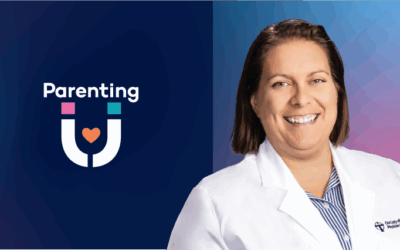In August 2022, Our Lady of the Lake Regional Medical Center’s Trauma Center was upgraded from a Level II adult trauma center to Level I by the American College of Surgeons, making it the first and only trauma center in the Capital Region and one of only three in Louisiana to receive the prestigious distinction.
The recognition from the ACS highlights the robust, multi-disciplinary care model Our Lady of the Lake has provided to the state for nearly 100 years and its commitment to bringing the highest quality of care to its patients.
But what does a Level I distinction really mean? And how is it different from a Level II or Level III trauma center?
In simplest terms, a Level I trauma center can provide the top tier of care for every aspect of an injury—from prevention through rehabilitation. It must be geographically central to a region in order to extend care to all other hospitals and trauma centers in the area. That requires a huge commitment of hospital resources and makes Our Lady of the Lake an important and natural asset to the Baton Rouge area in treating the most serious injuries needing immediate attention.
“The quality of our emergency department nurses, physicians and processes equate to fast response times and a high level of care when it matters the most,” says Tomas Jacome, MD, medical director of the Our Lady of the Lake Trauma Center. “We’ve had the volume of a Level I center for some time, but now we’ve added the research and education systems to truly set this center apart, ensuring our community is cared for when they need it the most.”
Level II and Level III trauma centers can initiate care for injured patients but would often have to transfer those patients to a more advanced facility. A Level I trauma center can provide cardiac surgery, hemodialysis and microvascular surgery—procedures that may not be available at Level II and III facilities.
Services of Level I Trauma Centers Include:
- 24-hour in-house coverage by general surgeons, and prompt availability of care in specialties such as orthopedic surgery, neurosurgery, anesthesiology, emergency medicine, radiology, internal medicine, plastic surgery, oral and maxillofacial, pediatric, and critical care
- Referral resources for communities in nearby regions
- Leadership in prevention and public education to surrounding communities
- Continuing education for its trauma team members
- Incorporation of a comprehensive quality assessment program
- Operation of an organized teaching and research effort to help direct new innovations in trauma care
- A program for substance abuse screening and patient intervention
- Meeting minimum requirements for annual volume of severely injured patients
Our Lady of the Lake Regional Medical Center has served as a Level II trauma center since 2013 and has been preparing to become a Level I facility since the closure of Earl K. Long Medical Center and the public-private partnership between the state and Our Lady of the Lake was approved that same year.
The center has treated a variety of traumatic injuries resulting from motor vehicle crashes, falls, jobsite accidents, penetrating trauma, natural disasters and more, with more than 3,000 trauma activations and more than 1,400 hospital admissions annually.
As the city’s top ranked U.S. News & World Report hospital, Our Lady of the Lake also boasts a top-notch emergency department at the forefront of its trauma program.
“This trauma verification is a big deal for our community and the nearly one million people who live and work in the region,” says Catherine O’Neal, MD, chief medical officer at Our Lady of the Lake. “Our trauma center saves countless lives every year, and I am extremely proud of the dedication and hard work that our trauma team provides day in and day out.”




